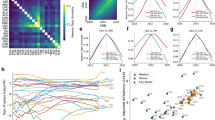Abstract
In this paper, we examine the question whether it is meaningful to talk about the scientific productivity of nations based on indexes like the Science Citation Index or Scopus, when the journal set covered by them keeps changing with time. We hypothesize from the illustrative case of India’s declining productivity in the 1980s which correlated with a fall in its journals indexed, that an apparent increase/decrease in productivity for any country, based on observed change in its share of papers could, in fact, be an effect resulting from the inclusion of more/less journals from the country. To verify our hypothesis we have used SCIMAGO data. We found that for a set of 90 countries, the share of journals regressed on the share of papers gave a linear relationship that explained 80% of the variance. However, we also show that in the case of China’s unusual rise in world scientific productivity (to second rank crossing several other countries), there is yet another factor that needs to be taken into account. We define a new indicator—the JOURNAL PACKING DENSITY (JPD) or average number of papers in journals from a given country. We show that the packing density of Chinese journals has steadily increased over the last few years. Currently, Chinese journals have the highest ‘packing density’ in the world, almost twice the world average which is about 100 papers per journal per annum. The deviation of the JPD from the world average is another indicator which will affect so called ‘national productivities’ in addition to the number of national journals indexed. We conclude that in the context of a five fold increase in the number of journals indexed over 20 years, the simplistic notion of ‘scientific productivity’ as equivalent to papers indexed needs to be re-examined.






Similar content being viewed by others
References
Basu, A. (1999a). Are Indian scientist’s losing in the world publishing race? A refutation. In P. S. Nagpaul, et al. (Eds.), Emerging trends in scientometrics. New Delhi: Allied Publishers.
Basu, A. (1999b). Science publication indicators for India: Questions of interpretation. Scientometrics, 44, 347–360.
Basu, A. et al. (1999, 2000). Scientific Productivity, where do we stand?, Brief reports on Indian science based on bibliometric indicators, prepared for Indian Science Congress, Chennai Jan 1999 and Pune, Jan 2000 (reprinted in Information Today and Tommrrow, 1999).
Gorraiz, J., Greil, M., Mayer, W., Reimann, R., Sturn, D., & Schiebel, E. (2008). International publication output and research impact in the social sciences: Comparison of the universities of Vienna, Zurich and Oslo in Excellence and Emergence: A new challenge for the combination of quantitative and qualitative approaches, Book of Abstracts, tenth international conference on science and technology indicators, Vienna, p. 236.
Jin, B., & Rousseau, R. (2005). China’s quantitative expansion phase: Exponential growth, but low impact. Proceedings of the 10th international conference on scientometrics and informetrics, Stockholm.
King, C. (2008). India’s new millennium in science, Science Watch, Sep–Oct 2008.
Leydesdorff, L., & Zhou, P. (2005). Are the contributions of China and Korea upsetting the world system of science? Scientometrics, 63, 617–630.
Moed, H. (2002). Measuring China’s research performance using the science citation index. Scientometrics, 53, 281–296.
Raghuram, N., & Madhavi, Y. (1996). India’s declining ranking. Nature, 383, 572.
SCImago. (2007). SJR—SCImago journal and country rank. Retrieved April 23, 2008 from http://www.scimagojr.com .
Shelton, R. D. (2008). China forecast to lead the U.S. in scientific publications within ten years, poster, tenth international conference on science and technology indicators, Vienna, Sept. 2008. Working Paper: CpaperSummary9.12.8.doc.
Shelton, R. D., & Foland, P. (2008). National efficiencies in publishing scientific papers, in excellence and emergence: A new challenge for the combination of quantitative and qualitative approaches, Book of Abstracts, tenth international conference on science and technology indicators, Vienna.
Scopus. http://www.scopus.com/scopus/home.url (Retrieved April 23, 2008).
Science Citation Index. http://www.scientific.thomsonreuters.com/products/sci/.
Thomson Scientific. (2007). Scientific output in china is growing. http://scientific.thomson.com/press/2007/8423909/.
Web of Science. http://www.scientific.thomson.com/products/wos/.
Zhou, P., & Leydesdorff, P. (2000). China Ranks Second In Scientific Publications Since 2006, ISSI Newsletter March 2000.
Zhou, P., & Leydesdorff, L. (2006). The emergence of China as a leading nation in science. Research Policy, 35(1), 83–104.
Author information
Authors and Affiliations
Corresponding author
Rights and permissions
About this article
Cite this article
Basu, A. Does a country’s scientific ‘productivity’ depend critically on the number of country journals indexed?. Scientometrics 82, 507–516 (2010). https://doi.org/10.1007/s11192-010-0186-8
Received:
Published:
Issue Date:
DOI: https://doi.org/10.1007/s11192-010-0186-8




